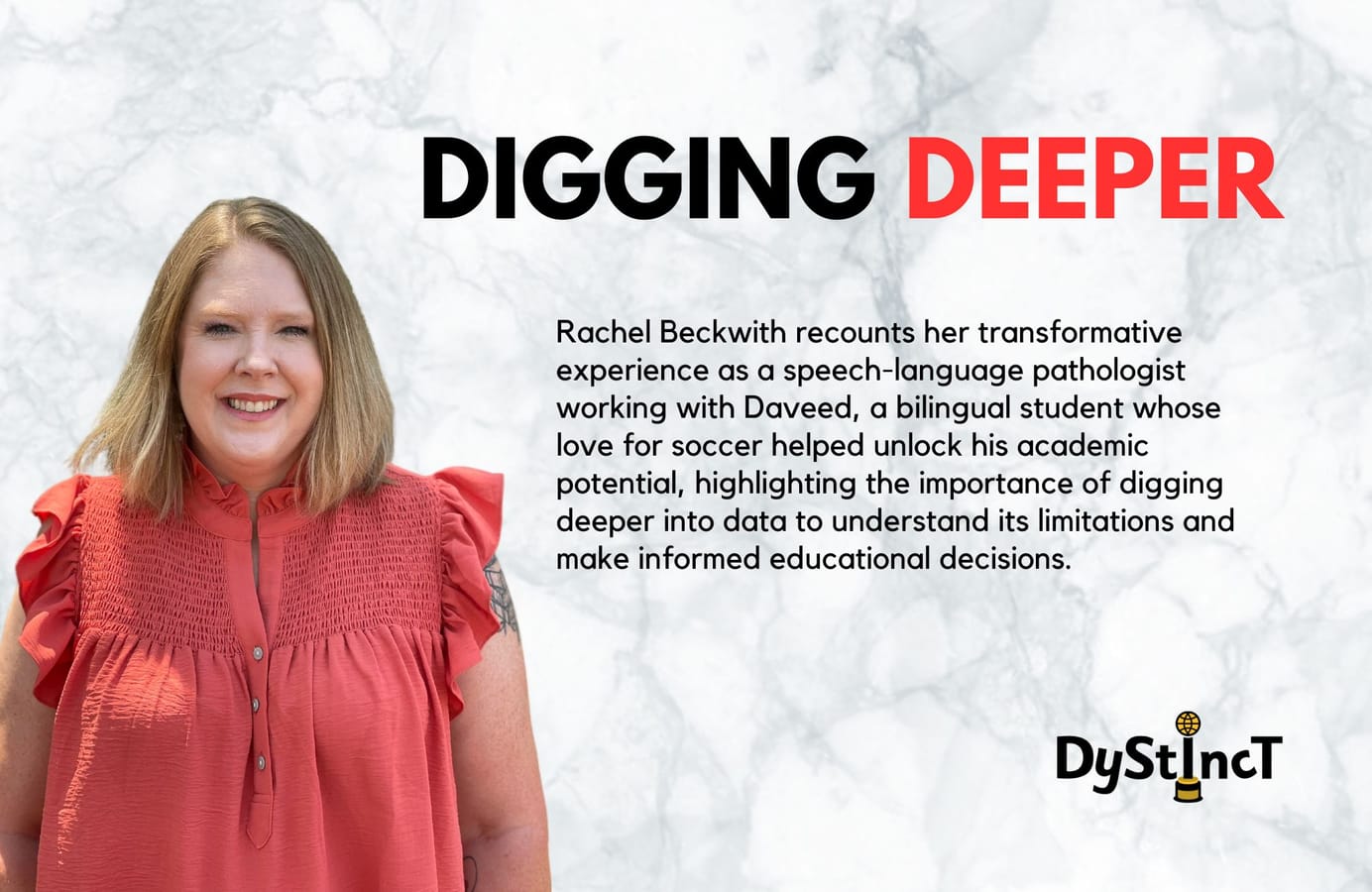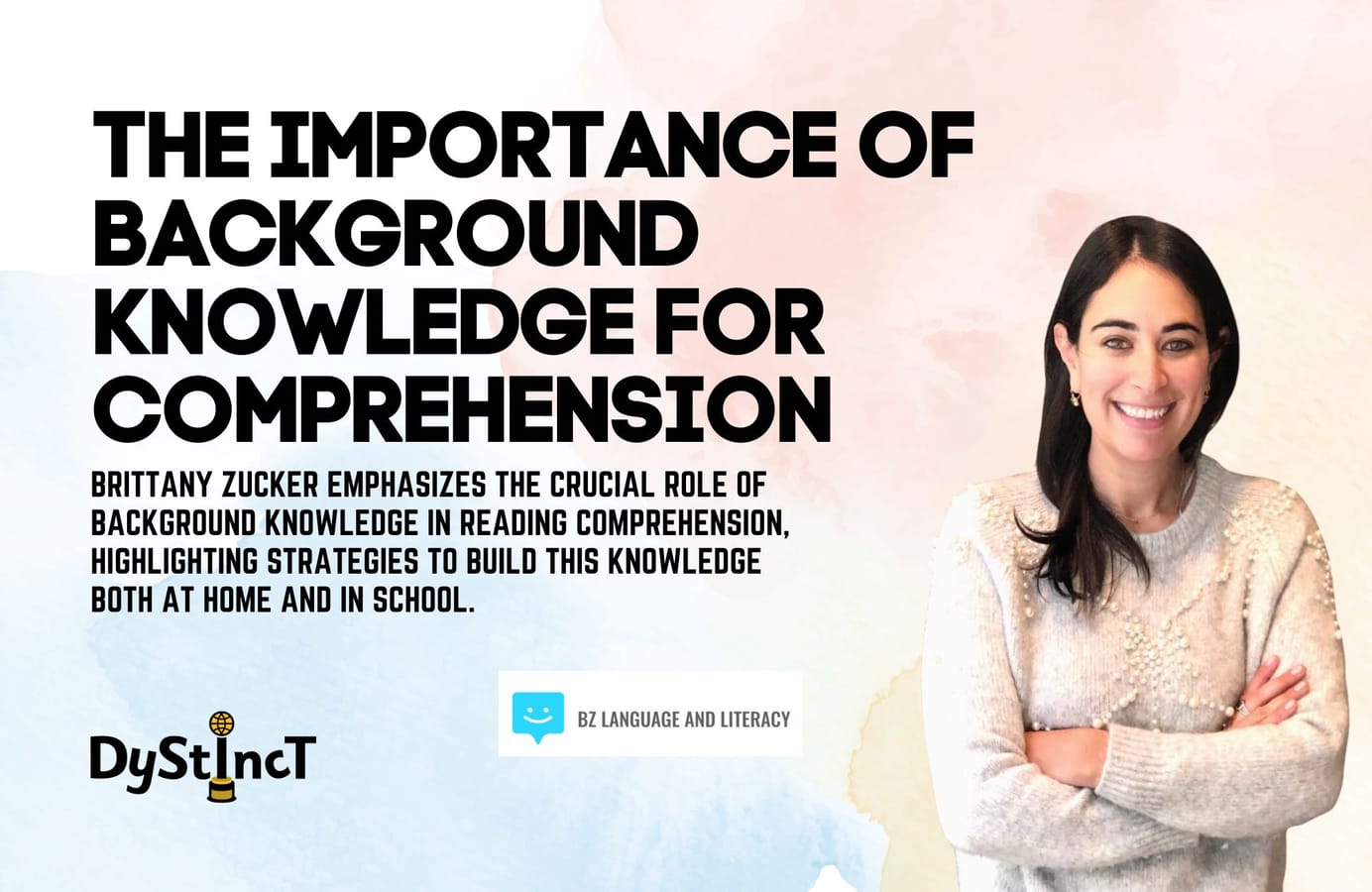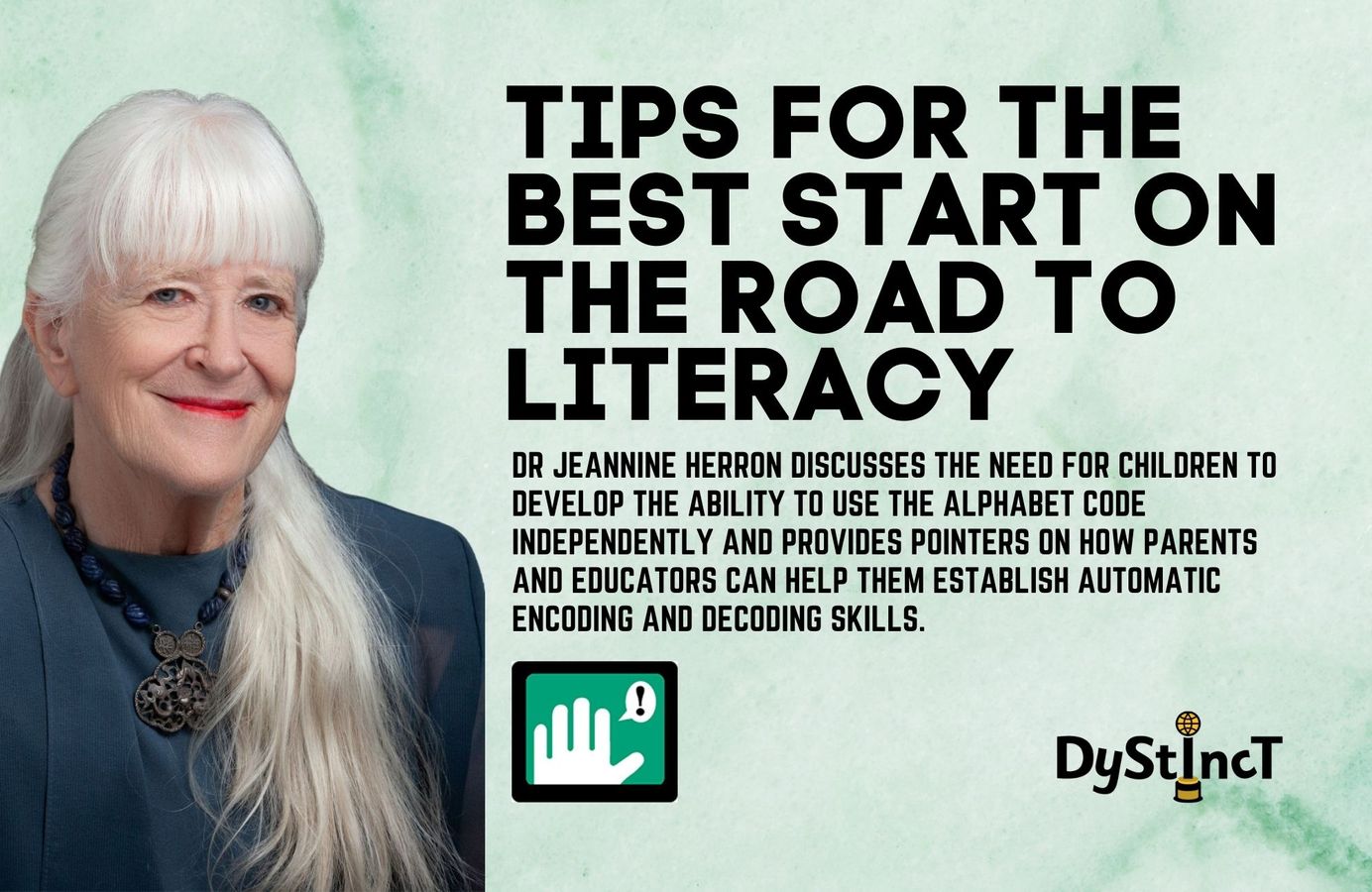
Issue 13: Tips for the best start on the road to literacy | Dr Jeannine Herron
Dr Jeannine Herron discusses the need for children to develop the ability to use the alphabet code independently and provides pointers on how parents and educators can help them establish automatic encoding and decoding skills.
TAKE THE GUESSING OUT OF READING
Trying to learn to read with just your eyes and your ears is like trying to drive a car without a motor. Speech is the motor. Its basic wiring is packaged with the brain when it is delivered. Oral language and vocabulary are critical foundations of literacy. However, the speech motor needs to be upgraded with new gears when the brain is challenged to learn to read.
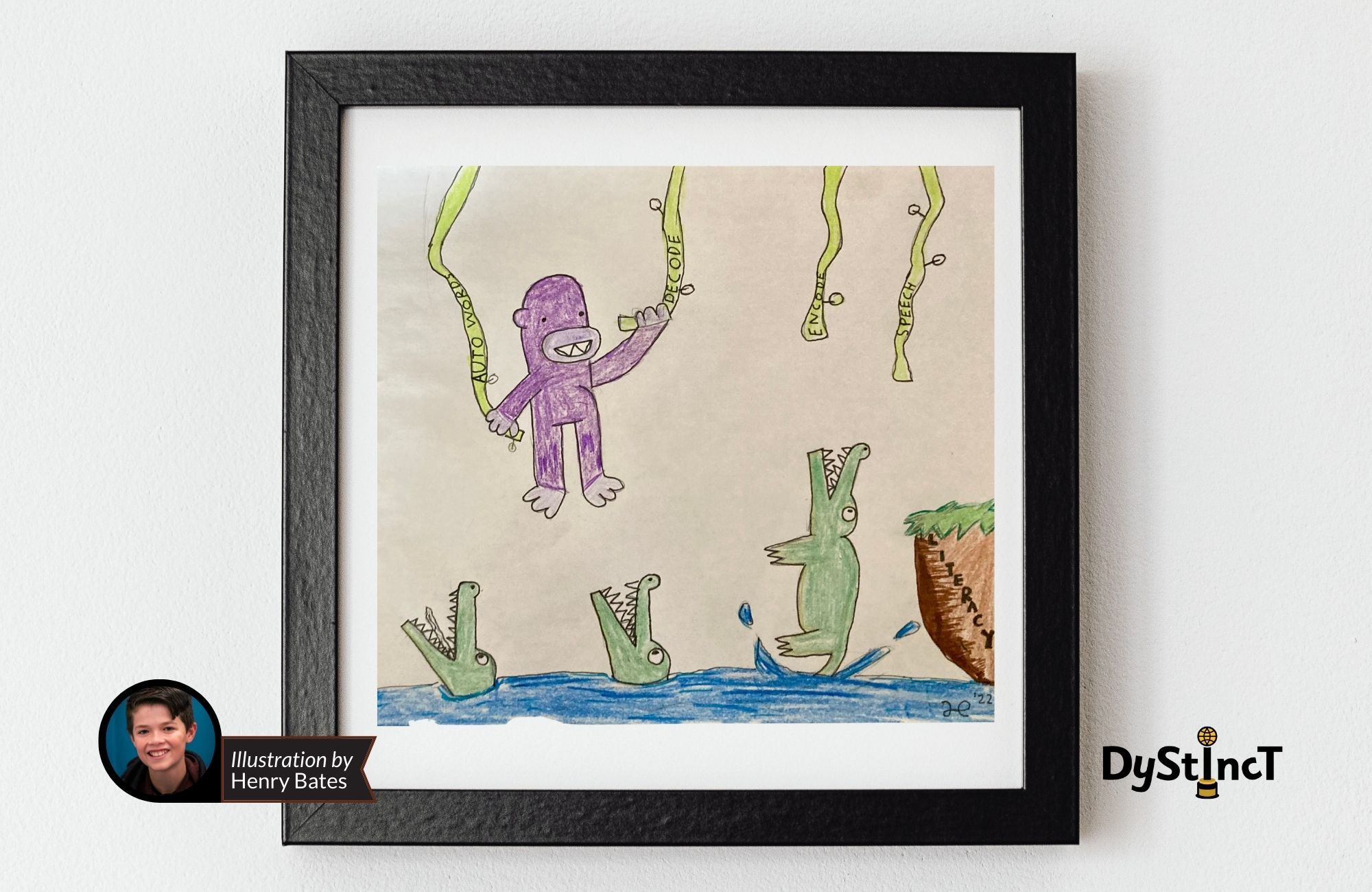
Instant word recognition is not achieved by memorizing the visual appearance of words. There is a different route that connects reading with what the brain already knows about words in the vast networks of SPEECH. Essential brain pathways for instant word recognition are not developed by teaching children to memorize sight words and to rely on pictures and guessing to read. Memorizing the words that go with the pictures in a book may look like reading, but it is not reading. Children need to develop the ability to use the alphabet code ON THEIR OWN – to de-code and en-code new words INDEPENDENTLY. Then they won't have to depend on someone else to read or spell a word for them.
Memorizing the words that go with the pictures in a book may look like reading, but it is not reading.
The alphabet was invented to make spoken words visible - to go from speech-to-print.
ENCODING (segmenting spoken words and using letters to spell them) is the fastest and most efficient route to reading. The alphabet was invented to make spoken words visible - to go from speech-to-print. Children as young as four years old can learn that they can turn words they SAY into words they can SEE. To learn what the alphabet is for, children can learn that they are saying three sounds when they say a word like MAT and that three shapes (letters) can stand for those sounds. Gradually they can learn to change the word MAT to CAT, HAT, SAT, FAT, etc., by identifying the first speech-bit and linking a new letter to that speech-sound. The most important concept for them to grasp is that spoken words are actually connected bits of speech and that letters can stand for those speech-bits.
We used to think that reading skills came in a systematic sequence of packages — first memorizing names and sounds of all 26 upper and lowercase letters, then learning to rhyme, learning to identify big chunks of words like compound words and syllables, then becoming aware of initial sounds, etc. These skills do not need to come one before another. They are not prerequisites for reading. Phoneme awareness and phonics can be taught SIMULTANEOUSLY and more MEANINGFULLY as children learn to encode and decode real words.
ENCODING CAN HAPPEN AT HOME AND SCHOOL
Try this with any non-reader, whether 4 or 80 years old.
- Make letter tiles with all 40 sounds of English—21 consonants, 5 short vowels, 5 long vowels (in a different color), TH, SH, CH, WH, AW, OU, OO (as in MOON). OO (as in BOOK), NG. These tiles can be arranged and re-arranged to help non-readers encode (sound-out and spell) any word they can say.
- Start with a word like MAT. Convey the meaning of the word in a sentence—"We are sitting on a MAT."
- Demonstrate that when you say MAT, you are making three sounds with your mouth.
- Get your student to say MAT with you while you stretch out the individual sounds—"mmm", "aaa" "ttt".
- Find the letter tiles that stand for those sounds and arrange them to spell the word MAT.
- Explain that the letter M stands for the sound "mmm"—as in MAMA or MOUNTAIN and that it looks like two mountains. The letter A stands for "aaa", and the T stands for "tt".
- When you have arranged the word MAT, say, "Now let's read it." Then have your student point to each letter and say its sound—"mmm"- "aaa"- "ttt".
- Then point to each letter again, going a little faster.
- Pointing at each letter a third time, blend the sounds quickly into the word MAT.
Your student has encoded and decoded a word.
Now in subsequent lessons, you need to gradually introduce the other 37 speech sounds.
- Leave the AT on the table, repeating that these letters spell the word "AT"—like "She is AT the store."
- Now ask, "Would you like to write the word SAT?" "I SAT down."
- "Let's say the word SAT." Say it together, stretching the sounds out into each separate sound. "What sound did we say at the beginning of the word SAT?" Say the sound "sss" together. Explain that the letter S stands for the sound "sss", as in SNAKE, and it looks like a snake, etc.
- Place the S next to the AT and sound out the word SAT. With a rime like AT, you can introduce seven letters (M, C, A, T, F, H, S) and five words (MAT, FAT, CAT, SAT, HAT).
- By changing the T to a P and working with AP, you can introduce P and L and spell words like MAP, CAP, NAP, LAP, SAP, and TAP.
- Always say, "What sound did you SAY at the beginning of that word?" Or, "What sound did you SAY at the end of that word?" Your students are becoming aware of saying different sounds when they pronounce a word (phoneme awareness) and linking a letter to each sound (phonics).
With just a few rimes (IT—HIT, SIT, FIT, LIT, PIT, or OP—COP, HOP, MOP, POP, TOP, or ET—BET, GET, JET, LET, MET, NET, PET, SET, VET, WET, YET) you can introduce new sounds as they occur in meaningful words, and familiarize your students with many words. They have to learn to SAY the words and IDENTIFY the sounds and RETRIEVE FROM MEMORY the correct letters all on their own. This is not easy, but it can be lots of fun as students discover their own independence in reading and writing.
As soon as you feel your students are ready, they can start writing with a pencil or marker in addition to (or instead of) using the tiles. For young children, it's easiest to start writing on a whiteboard with a marker. It's possible to start dictating phrases or sentences (FAT CAT. THE CAT HAS A HAT) when students have only worked with half of the 40 sounds.
The most important concept for them to absorb is that the words they say are produced by pronouncing individual speech sounds and that letters stand for those sounds. Students soon discover that they can write any word they can say. It is an exciting discovery. It makes them very proud to be able to go to grandma and say, "Watch! I can write the word FANTASTIC!"
Encoding and decoding must become automatic without requiring conscious analysis.
This article was not an attempt to encompass the greater complexity of later reading and writing but to elucidate the important early steps of how to develop automatic encoding and decoding skills in an effort to prevent some of the difficulties that may arise later from inadequate early instruction. There is considerable evidence now demonstrating how the brain learns to read words instantly. Encoding and decoding must become automatic without requiring conscious analysis. These skills will enable many, many more children to drive their upgraded literacy cars independently down a superhighway, able to enjoy the meaning of what they are reading or writing without struggling over bumps in the road.
Dr Jeannine Herron
Research Neuropsychologist, Founder and Director of Talking Fingers
TalkingFingers.com | Facebook | Twitter | YouTube
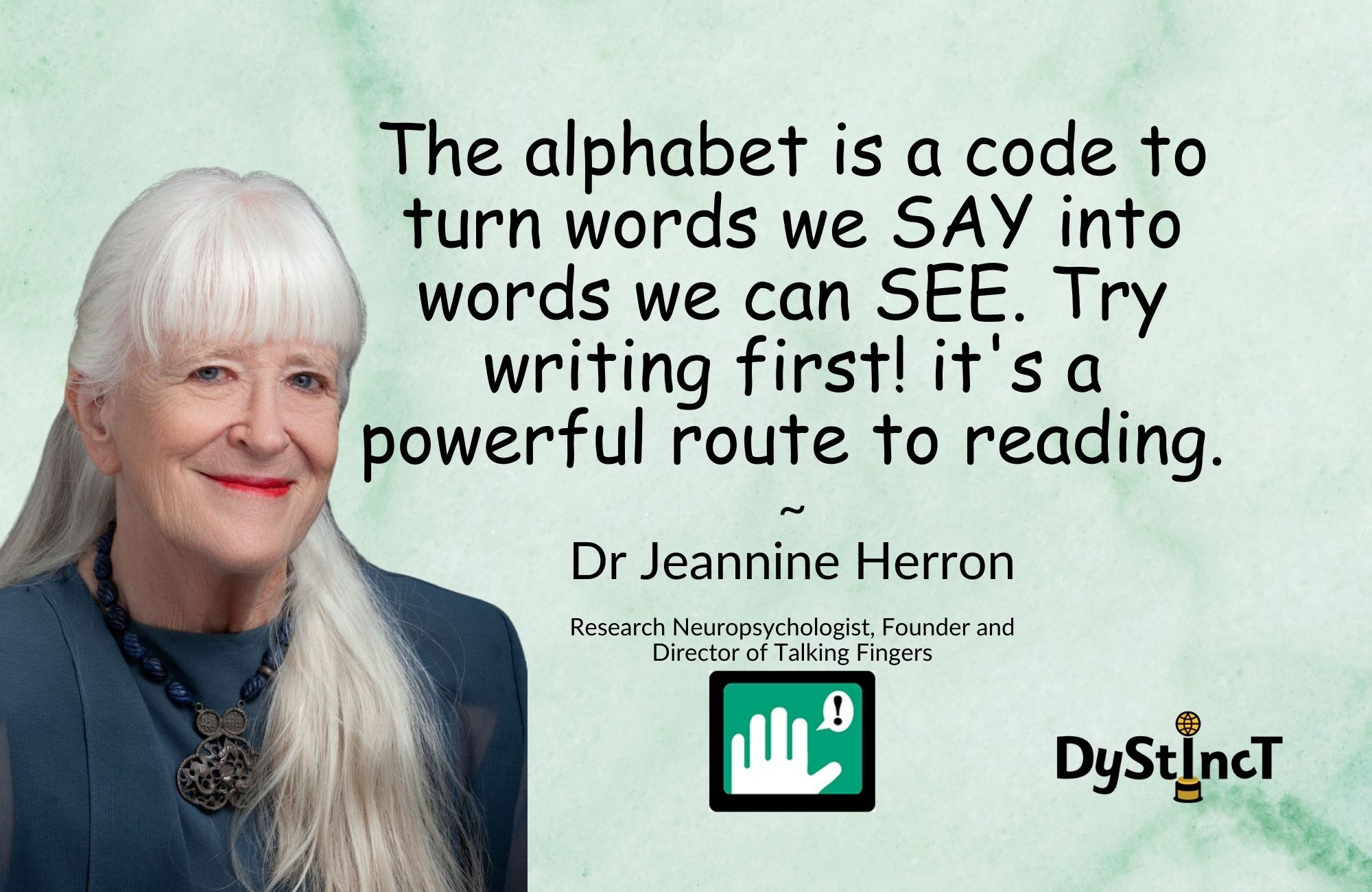
Dr Jeannine Herron, a research neuropsychologist, has spent 40 years investigating reading, ten of those years at the University of California San Francisco doing dyslexia research. Five grants from the U.S. National Institute of Child Health & Development enabled her to develop and do research with Speech to Print instructional products. She is the founder and director of Talking Fingers, creator of Read, Write & Type, and author of Making Speech Visible: How Constructing Words Can Help Children Organize Their Brains for Skillful Reading.
BUY BOOK
Making Speech Visible: Constructing Words Can Help Children Organize Their Brains for Skillful Reading
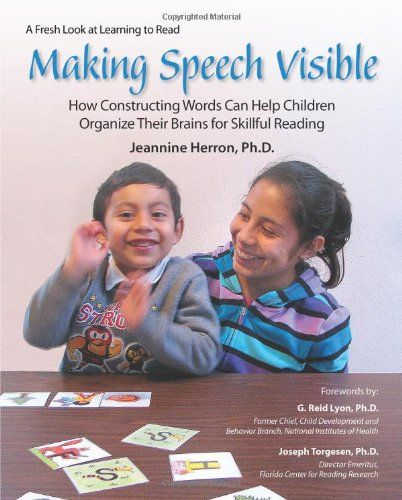
Making Speech Visible: Constructing Words Can Help Children Organize Their Brains for Skillful Reading
This book proposes a simple, but fundamental, change in the way children are introduced to reading. It explains how this change could result in more efficient reading pathways in the brain. The switch is as simple as this: children need to construct words themselves before they try to read someone else's words. They need to SEE how the alphabet code represents what they SAY. Reversing the order of instruction in this way-writing as a route to reading-could help prevent the reading difficulties that turn many children away from the joy of reading.
Additional Reading
Print-to-Speech and Speech-to-Print: Mapping Early Literacy
I am writing on behalf of 35 researchers and educators who have been working together to find solutions to the “reading wars.” Recently, several powerful bombs have been dropped in the “reading wars” – starting fires that need attending – Emily Hanford’s Sold a Story, The Response letter, the Parent Response in Hechinger, and the teacher response, A Call for Rejecting SoR Strawmen. With the paper "Print-to-Speech and Speech-to-Print: Mapping Early Literacy", we are offering a “counter-fire” to respond to the reactions sparked by Hanford’s series. (Instead of allowing fire with unpredictable behavior to spread, crews add a new fire to meet the advancing fire).
Dubbing ourselves “Reading Peaceniks”, a few of us have met together for two years now, searching for ways to end the divisiveness. With the paper – Print-to-Speech and Speech-to-Print; Mapping Early Literacy – we have chosen to address strongly held differences in instructional approaches at their earliest roots – Pre-K to Grade 1 or 2. In the basic “reading war” controversy, one side yearns for meaningfulness – an end to time-consuming isolated “precursor” exercises divorced from the real fun of reading and writing. The other side yearns for meaningful ways to present essential direct instruction that provide children with the alphabetic coding that research has shown they need to develop into joyful readers and writers. Our Mapping paper, finding consensus with 35 others after much discussion and editing, suggests “good practices” for early literacy that we hope will address that yearning for meaningfulness on both sides.
~ Dr Jeannine Herron
Read more on ReadingRockets.org
Extracts from Dystinct Magazine












